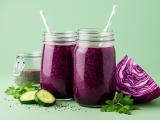On average, Slovenians consume one more bread than Europeans, but still almost half less than, for example, Serbians (109 kilograms), who are the biggest bread eaters in Europe. Unfortunately, bread has been receiving a lot of negative criticism lately. What of this is justified?
When it comes to bread of older varieties, particularly white bread and pastries, modern nutritionists are rightfully reserved. If we evaluate bread based on the content of complex B vitamins, vitamin E, dietary fibers, minerals, iron, zinc, calcium, proteins, and monounsaturated amino acids, then it is true that white bread is not recommended.
However, if you choose whole grain bread, which has a rougher texture, less appealing appearance, and slightly different taste, the picture is completely different. Such bread provides us with more than half of our daily energy, and the positive effects certainly outweigh the negatives.
Another significant issue is if bread is made exclusively from wheat flour. The greater the proportion of rye, barley, spelt, oats, corn, buckwheat, millet, and other grains, the greater the positive impact of bread on our health. Breads made from alternative flours are much more nutritious and also less burdensome for our bodies.
Therefore, nutritionists recommend: YES to whole grain bread with a high proportion of alternative flours, but be cautious with white bread, rolls, and especially pastries.
The latter also significantly contributes to weight gain.
Datum: 16. SEP 25 - GOOD TO KNOW
Why should we avoid bread?
A Slovenian eats between 60 and 70 kilograms of bread per year. Should we be worried about that? Fortunately, not (yet) ...
(FW)
 Would you like to be informed about news on the website?
Would you like to be informed about news on the website?
Just enter your e-mail
Whole grain bread
Alternative flours
Bread nutrition
Bread health benefits
White bread criticism
|
Copyright (c) Foodwhisper.com March 2018 |
π | Contact: info@foodwhisper.com |
About us | Facebook |  |









